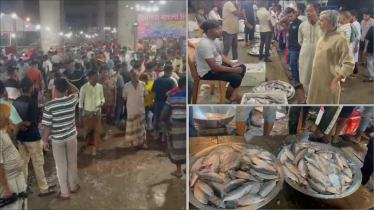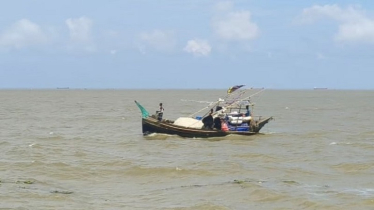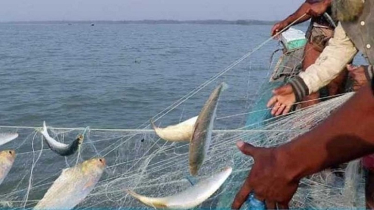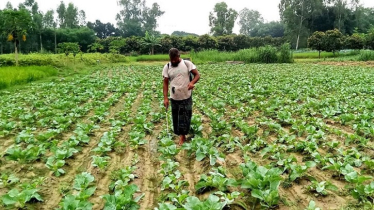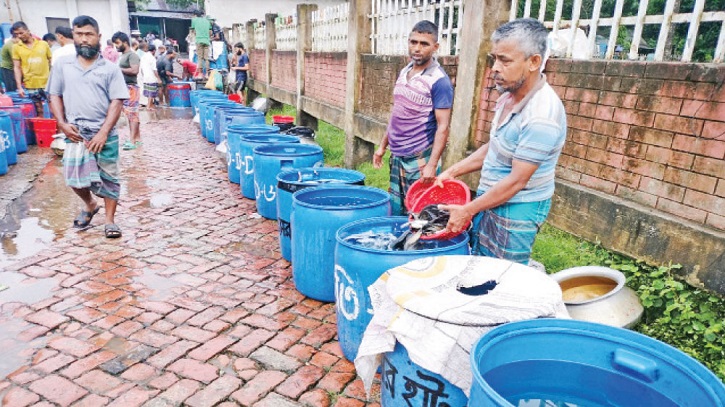
Along the Agailjhara–Gopalganj highway in Barishal lies Daserhat Bazar, a bustling trading hub that awakens long before dawn. Before sunrise, the narrow roadside fills with mini trucks, small carriers, and pickups laden with rows of plastic drums and aluminum pots teeming with carp, catla, pangas, and tilapia fry.
By 7 a.m., the market opens, and in the span of just one hour, it turns into a vibrant economic scene. The air buzzes with bargaining, shouting, and rapid transactions — forming a short-lived yet powerful local economy worth millions of taka each morning.
Local traders say that during the season, transactions exceeding Tk 1 crore take place within that single hour every day. Although trade volumes fluctuate with seasonal demand, Daserhat Bazar generates an estimated annual turnover of Tk 200 to 250 crore. The dawn market has thus become one of the most significant seasonal economic centers in southern Bangladesh.
Beyond being a trading point, many refer to Daserhat as the “unofficial stock exchange” of the southern region. Prices rise and fall within moments, and traders — from small-scale sellers to large suppliers — collectively create a dynamic cycle of rural capital.
The market’s vitality depends on a far-reaching supply chain. Fish fry are collected mainly from the Bablatola area of Jashore, transported overnight by vans, and arrive at Agailjhara before dawn. Local small traders then distribute the fry to at least 30 to 40 markets across Faridpur, Madaripur, Shariatpur, Gopalganj, and Bhanga.
Small traders such as Selim Bepari, Halim Khalifa, Ismail Sardar, Rubel Shikdar, and Bhashan Sardar say that they must meet the daily demand of at least 50 small-scale fish farmers. Since local production cannot meet such high demand, the Bablatola supply remains essential to the market’s operation.
Alongside fish fry sales, a parallel rental economy has emerged in Daserhat. Traders rent not only fish containers but also essential tools such as pots, barrels, trays, and even digital weighing meters. A barrel or pot rents for Tk 20, a tray for Tk 20, and a digital meter for Tk 100.
Local businessman Mojibur Rahman owns 250 barrels, 200 pots, and several dozen trays, earning an average daily income of around Tk 10,000 solely from rentals.
The demand for water, essential for fish transport, has also given rise to another unique form of trade. Water is supplied from the Daserhat Takwa Jame Mosque’s reservoir at fixed rates: Tk 100 per water tank, Tk 20 per barrel, and Tk 10 per pot. Altogether, daily revenue from water and equipment rentals circulates between Tk 50,000 and Tk 70,000 — creating a complementary economy around the main fish fry trade.
The Daserhat fish fry market is not only making small fish farmers self-reliant but also significantly influencing the surrounding regional economy. Around it has grown a network of transport services, day laborers, barrel rental businesses, fish feed sellers, and busy local eateries catering to the influx of traders and buyers.
Families across Agailjhara, Gournadi, Kotalipara, and Gopalganj are directly or indirectly tied to this market — as hatchery owners, suppliers, laborers, or retailers in associated sectors. Thousands of people in Agailjhara alone earn their livelihood from this trade.
According to traders, aside from the fish fry business itself, economic activities worth Tk 50 to 60 crore take place annually around Daserhat. This thriving ecosystem is driving rural cash flow, expanding employment, and reinforcing the economic backbone of southern Bangladesh.


